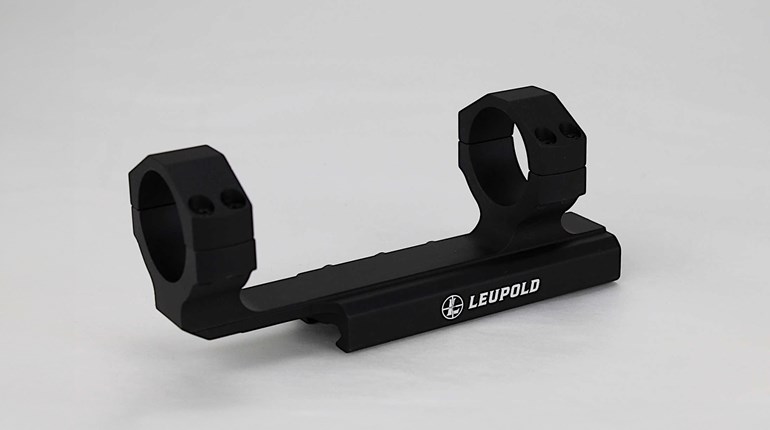
Every now and again, we take a break from our own self-absorbed frustrations (Seriously: Whaddaya mean, the world doesn’t revolve around us? When did that happen?!), and get wound up on behalf of one or another collection of associates. In this case, it’s shooting community friends in law enforcement or the military. All but universally underpaid and over-tasked, a remarkably high percentage of these men and women just “keep on keeping on” without complaint.

Our peeve relates to a bit of what we thought was old news regarding a primary tool of their trade—the Stoner pattern rifle. We’re still surprised at what apparently constitutes a “secret” in AR rifle performance, namely, the flatwire spring. This shouldn’t be a secret, and it is high time to be sure that everyone who straps on an AR for a living knows.
We learned about buffer spring intricacies the hard way ourselves, starting about 25 years ago. Between standard-length rifles that seemed annoyingly malfunction-prone on both ends of the firing cycle (apparent short-stroking leading to feed malfunctions, and stove-piping on ejection), and shorties that would rip case heads off, we figured it was our cleaning cycle, fluids or technique.
Or our lube. Or our ammo. Or our magazines. Or our bolt. Or our buffer. Or the ambient temperature. Or the phase of the *&$@# moon.
Anyway, you get the idea. Worse still, it seemed to plague new rifles just as frequently as those thoroughly broken in. Most aggravating of all, it would disappear as if by magic for a few hundred or even a thousand rounds, only to reappear just as mysteriously. It was enough to make us buy a FAL.
After a tooth-grinding decade or so, we deduced it was a spring thing—not the season, but the buffer spring. (OK, we’re a little slow; what’s your point?) Where spent cases were landing was the eventual big clue. When all our incarnations of Stoner rifles were running well, the cases seemed to land between 3 and 4 o’clock relative to the shooter, often in an astonishingly neat little pile if target azimuth was constant.Mercifully, a really smart guy—David Tubb, by name—solved the problem for all of us.
When the malfunctions started to appear, cases would generally land forward of that, say, 1:30 to 2:30 position. Subtler evidence of problems could also be found on the case deflector: A lot of brassing here was evidence of potential ejection issues, too (remember, the original rifles had no such tumor). Aha! Eureka, even! It’s all about the timing.
But understanding the problem and solving it were two very different things. Trying to make that case exit the rifle at the proper time in the firing cycle is a balance of many factors, and a crucial, compound indicator of sequences and durations that differentiate a reliable AR from a polymer, aluminum and steel club. We won’t belabor them, but suffice it to say we probably invested $1,500 in geegaws, gizmos and wonder-lubes, and tested them in at least a dozen rifles to little avail. We counted rounds and feverishly rotated/replaced/trimmed springs. We burned incense. We cursed and prayed. We stopped short of voodoo on tiny ARs, though barely. And still our rifles were less reliable than the steady improvement in overall quality ought to have guaranteed.
Mercifully, a really smart guy—David Tubb, by name—solved the problem for all of us. Virtually any serious rifle shooter will know him, and with good reason: He holds something like 30 national titles, and is almost certainly the best rifleman of his generation, if not ever.
You can see Tubb explain the functioning of his Tubb Precision Chrome Silicon flatwire springs here, but the high points alone make a good case:
Life – You’re spectacularly unlikely to ever need another one for a given rifle, as the duty cycle is 500,000 compressions. (This is what ate us up for years: It wasn’t uncommon to encounter ejection angle changes in as little as 300 rounds, and malfunctions were soon to follow. Conventional springs can depart tolerance that quickly.)
Versatility – The springs will work in either standard or carbine-length gas systems and stocks, and with standard buffers. It’s the only thing we’ve had to change in many rifles to render a “problem child” a star performer.
Ends “Porpoising” – Particularly on short gas systems, the bolt can cam open too rapidly and violently. In addition to the obvious problems for any accurate, precise, follow-up shot, this can be severe enough to put your rifle out of action by yanking the case head off the back of the fired cartridge (and leaving the remainder in the chamber—a rare but comprehensive disaster, as well as a bugger to clear). The Tubb Precision spring keeps the bolt closed slightly longer than a round music wire or stainless steel spring, and allows pressure to fall somewhat more before opening. It’s perhaps counterintuitive, but while it acts like an “extra power” spring in the bolt closure sense, it makes use of a lighter spring rate, though acting over a longer throw (due to a notably shorter “solid” height). This increases spring life and smooths the recoil impulse. Voila: Better, quicker follow-ups, and no muzzle dip as the bolt goes home at the end of the chambering process.
So if you’re seeing these foibles in a rifle you’re betting your life on, think seriously about this spring upgrade ($28). It’s a tiny fraction of the cost of most of the other fiddles, and, dollar-for-dollar, a far more noticeable improvement.
We’ve yet to encounter a rifle it didn’t noticeably improve.


































